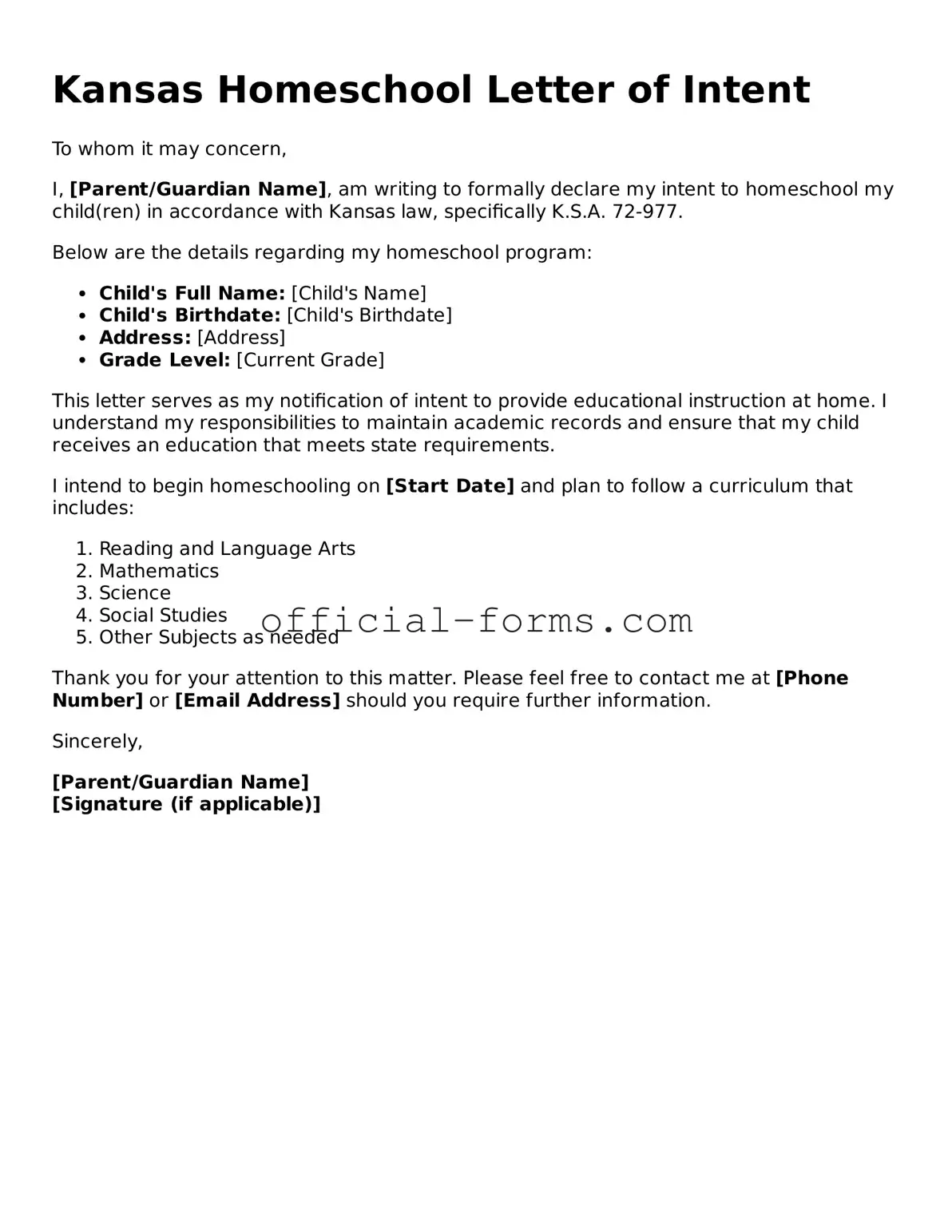Filling out the Kansas Homeschool Letter of Intent form can be a straightforward process, but there are common mistakes that can lead to unnecessary complications. One frequent error is neglecting to include all required information. This form requests specific details about the student, such as their full name and date of birth. Omitting any of this information can delay the approval process.
Another mistake people often make is failing to sign and date the form. A signature indicates that you are officially submitting the letter of intent. Without it, the form is considered incomplete. It is essential to double-check that both the signature and date are included before submission.
Some individuals mistakenly assume that the form can be submitted at any time of the year. However, Kansas law requires that the letter of intent be filed within a specific timeframe. Typically, it should be submitted before the start of the school year. Missing this deadline can result in complications regarding your homeschooling status.
Inaccurate information can also lead to problems. Parents sometimes misreport their address or provide incorrect details about their educational plans. Ensuring that all information is accurate and up-to-date is crucial for a smooth approval process.
Many people overlook the importance of keeping a copy of the completed form. After submitting the letter of intent, it is wise to retain a copy for your records. This can be helpful if any questions arise regarding your homeschooling status in the future.
Another common oversight is not providing a clear educational plan. While the form may not require a detailed curriculum, mentioning your general approach to education can be beneficial. This helps demonstrate your commitment to providing a quality education for your child.
Some parents fail to notify the local school district of their intent to homeschool. While the letter of intent serves as notification, it is also a good practice to communicate directly with the district. This can prevent misunderstandings and ensure that all parties are informed.
Additionally, many individuals do not research the specific homeschooling laws in Kansas. Understanding the legal requirements can help avoid potential pitfalls. Familiarizing yourself with the regulations will ensure that you are fully compliant with state laws.
Finally, procrastination can be a significant barrier. Waiting until the last minute to fill out and submit the form can lead to rushed mistakes. Planning ahead and completing the form well in advance can alleviate stress and ensure accuracy.
